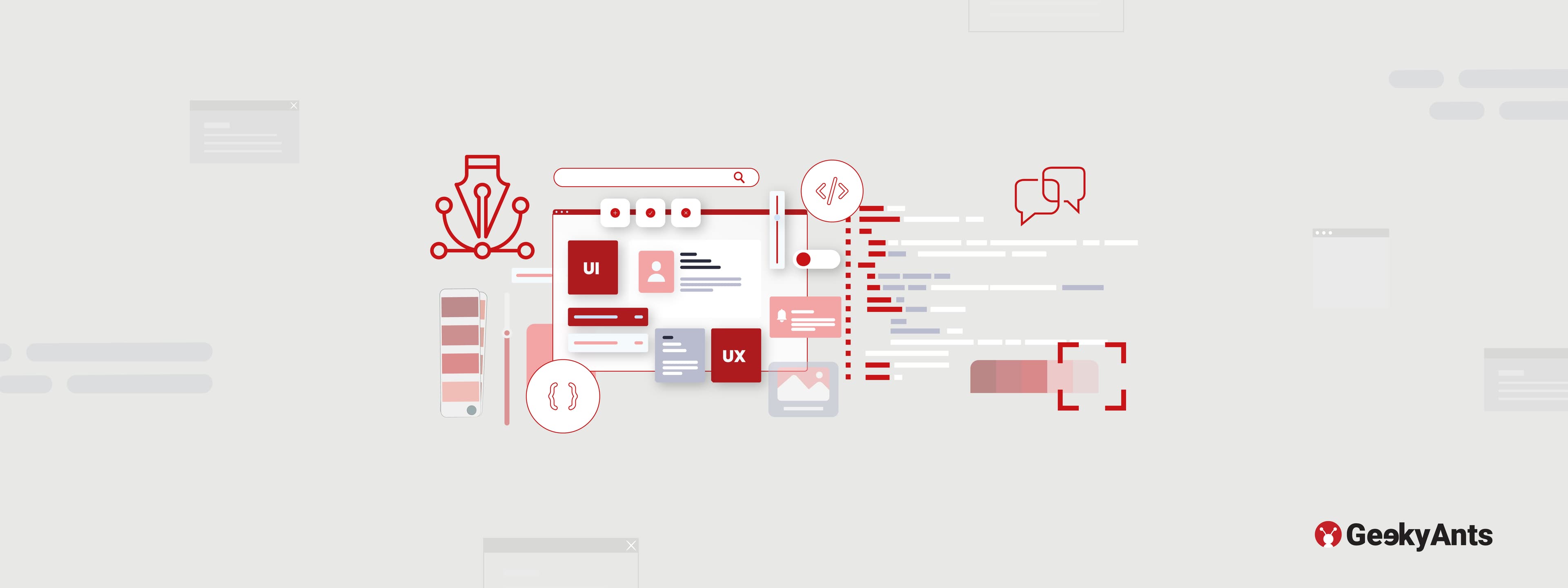Table of Contents
Steps for Developing and Implementing a Design System in Your Organization
Author

Date

Book a call
Introduction
Design systems will be vital in the coming decade. Any business that wants to develop consistency across products and unlock the potential of its design and development teams will need a design system.
If you've decided to develop or incorporate one into your business, you'll need to understand the processes involved. How to maximize its utilization inside the organization, possible challenges and, most importantly, what to avoid when building a design system.
This article will cover the do’s and don'ts for implementing an effective design system in your organization.
Stages Involved in Developing a Design System
- Identifying Your Organization's Style and Building on It
- Doing a UI Probe
- Establish Rules and Principles for the Design System
- Setting up a Strategy and Defining a Structure
- Communicating and Maintaining
Let’s take a look at the stages involved in the making of highly functioning design systems.
#1: Identifying Your Organization's Style and Building on It
To better understand the type of design system you want to implement, evaluate the current design approach and measure the maturity level of your product teams.
It's also advised to review the brand's rules and speak with stakeholders to determine the identity and language of the brand. This knowledge can serve as a guide for developing design principles and style manuals.
Design principles and style manuals can be developed using the knowledge acquired.
#2: Doing a UI Probe
The second thing a design systems team should do before creating a design system is to categorize every visual element of the product. Think about your design elements in terms of how they appear visually. This task has two objectives: To draw attention to the parts of the product with the most discrepancies, and to determine the product's most crucial and frequently utilized features and components.
#3: Establish Rules and Principles for the Design System
To ensure consistency and balance, it is essential to unify teams around clear goals. The main objective of a design system is to expand creative possibilities.
In order to do that, designers and developers must adhere to specific processes and follow a set of principles when introducing new components and patterns to the design system.
#4: Setting up a Strategy and Defining a Structure
Design systems are dynamic and evolve all the time, so it’s important to follow a structure and determine the strategy for authorizing changes to your design system. To guarantee that your design system can respond to changes, a clear governance framework must be developed.
When we examine a successful design system, such as Material Design, we see how extraordinarily reusable and structured they are. Material Design's enables designers and developers to utilize it as the basis for their products.
An enterprise would require a structure and a framework as essential elements to create components that may be utilized in several settings and are not restricted to a specific use case.
#5: Communicating and Maintaining
A design system is a byproduct of your product design that changes along with the business instead of being a static collection of artefacts. It's crucial to inform the entire company about changes and improvements once the teams start using a design system. Users should be aware of the modifications made in the new version and how the changes will impact their log work.
A successful business depends on ongoing improvements and additions.
Steps like incorporating typography into your current platform, finding new colour palettes for your brand, and adding animation and micro-interactions, will go a long way toward establishing an effective design system in your company.
Maximizing the Design System's Utilization in Your Organization
Building a design system is critical, but adoption is more crucial. A design system sets a new direction for an organization, and whether the organization accepts this direction largely depends on how people react to the changes.
Creating a vision board for your team and getting all the stakeholders on the same page is extremely important for the longevity of any design system. It is essential to promote its use and ensure that the design system is highly reusable and allows cross-functional collaboration. Giving designers and developers the freedom to explore various approaches and documenting it in an easy-to-understand language goes a long way in helping adopt any new system, including design systems.
Challenges with Design System Integration
A design system promotes communication between designers and developers and vastly improves the user experience.
However, maintaining the tool and continually improving its essential components is another difficulty businesses confront after implementing a design system in their organization.
Despite the apparent benefits of a design system, most businesses find it challenging to implement a design system in their ranks. Obtaining approval from your company's senior management requires more planning, which might be tricky.
What to Avoid
Following the latest design trends is essential to establishing efficient design systems, but succumbing to the trend and compromising the design system's core style standards can be disastrous.
In many ways, the design system is a trend in itself; thus, there should be an emphasis on creating design systems that reflect the tone, attitude, and value of your organization by keeping up with all the newest advances in the domain.
Analyzing the megacorporations like UBER, Spotify, and Airbnb provides a clear picture of a uniform pattern being followed, i.e. a seamless UI/UX. Seamless UI/UX results from ongoing efforts to improve and maintain these design systems.
It should remind everyone that having a design system is one thing, but constantly adding to palettes and redefining the brand values is equally essential for your product to remain viable and productive.
How Can GeekyAnts Help Your Business?
GeekyAnts: Design Studio is continually trying to bridge the communication gap between UI/UX designers and developers. We, as a collaborative group:-
- Have experienced designers who have implemented design systems for multiple organizations.
- Follow the atomic design methodology, a foundation for organizations to build and implement their design systems.
- Have also built a highly prodigious open-source design system called nativebase.io that is now being utilised and appreciated by the react native community globally.
You may also take a quick look at GeekyAnt’s incredibly successful design system for Pepperfry, which can be used as a starting point for your design system journey.
To know more about how we can help do so for your company, book an appointment today.
Dive deep into our research and insights. In our articles and blogs, we explore topics on design, how it relates to development, and impact of various trends to businesses.


